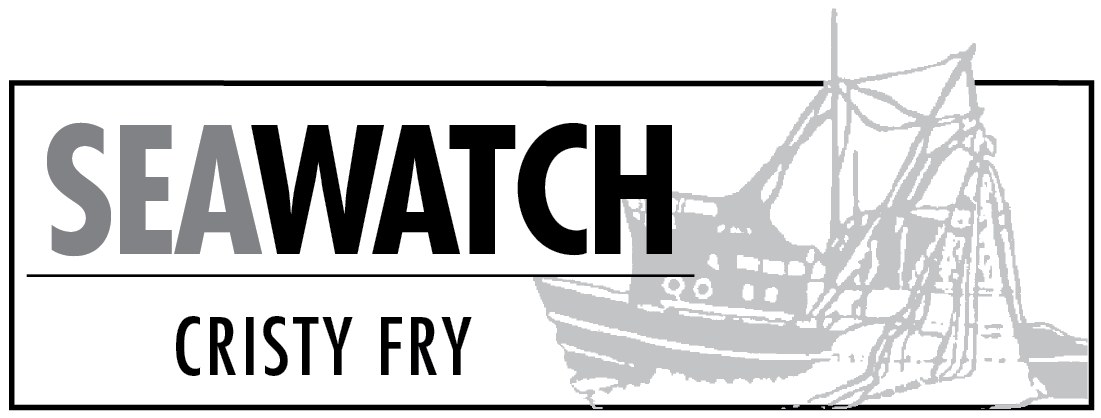The small boat fleet got some bad, but not unexpected news that the Bairdi tanner crab fisheries in Kodiak, Chignik and the Alaska Peninsula will be closed for the 2014 season.
The fisheries have been on a boom-and-bust cycle for years, with only two of the six Kodiak areas open last season, one of the two South Peninsula areas fishing, and Chignik closed completely.
The quota in Kodiak last season was 660,000 pounds, down from 950,000 pounds in 2012 and 1.47 million pounds in 2011.
The Chignik district saw a bump in the 2012 quota, set at 700,000 pounds, up from 600,000 pounds in 2011.
Further west, in the South Peninsula district, only the eastern district was open, with a quota of 230,000 pounds, a dramatic drop from previous years, with both the eastern and western district fishing a combined quota of 1.62 million pounds in 2012 and 2.3 million pounds in 2011.
Those quotas were driven by a year class that began showing up in trawl surveys in 2005 and 2006, which recruited into the fishery all at the same time, beginning in 2010.
When discussing the small quotas for last season, Alaska Department of Fish and Game area management biologist Mark Stichert said at the time that the year class that had come up through the ranks was reaching the end of its life cycle.
He said that tanner crab do not remain in the exploitable biomass as long as king crab.
“A tanner crab, unlike a king crab which will molt in perpetuity, a male tanner crab hits legal size and basically stops molting,” he said. “So their shelf life really drops off after their molt. You see them around for another two, three, four years, and then they start dying of natural mortality, so that’s why we’re seeing this pulse of crab that shot up, and then we’re seeing them drop off on a fairly equivalent rate.”
Stichert said biologists are hoping that the large population of crab that provided the larger quotas of the past couple of years were able to spawn at comparable rates and will provide a strong year class in the future.
Kodiak, Chignik and the Alaska Peninsula all have a long history of tanner crab fisheries, beginning in 1967 and 1968, and peaking in the late 1970’s. Kodiak’s best harvest was 33 million pounds, followed by Chignik with 11 million pounds, and the Alaska Peninsula with a high of 9 million pounds.
The government re-opened and the Bering Sea crab fleet was able to leave town beginning last Thursday afternoon, two days into the season, but the remnants of a typhoon that raked Japan kept many of them in Dutch Harbor until Saturday.
Fishing was expected to be pretty good; the vessel that has the cost-recovery contract with the State of Alaska and was not delayed by the goings-on in Washington D.C. reported some strings of gear with averages of 90 keepers per pot.
NMFS is also getting through the backlog of permit transfers for halibut and sablefish IFQs, according to Doug Bowen at Alaska Boats and Permits.
“Things are moving along,” Bowen said. “The feds are back in business, and things are transferring.”
Boats are struggling to fill their halibut and sablefish quotas before the season ends on November 7, with neither the weather nor the fish cooperating, especially sablefish.
Fishermen are reporting excruciatingly slow fishing for that species.
Bowen said he had just finalized a transfer of 4,000 pounds of sablefish that still had to be fished this season.
“The good news is, it transferred,” he said. “The bad news is, it transferred…”
Good Samaritans aboard the 98-foot fishing vessel Aleutian Beauty rescued five fishermen from a life raft in the Bering Sea Sunday, according to the Coast Guard.
The good Samaritans, responding to a Coast Guard issued urgent marine information broadcast, were first on scene about 69 miles west of Adak and rescued the crewmen from the life raft.
All five mariners are reportedly in good condition and were taken to Adak aboard the Seattle-based longliner Aleutian Beauty.
Coast Guard 17th District command center watchstanders in Juneau received a personal locator beacon alert followed by an EPIRB alert Sunday morning prompting callouts to the vessel, issuance of the urgent broadcast and the launch of Kodiak-based Coast Guard aircraft in Kodiak and deployed to Cold Bay and Sitka.
“The assistance of good Samaritans like the crew of the Aleutian Beauty is vital to saving lives in Alaska where we are regularly faced with harsh conditions and vast distances,” said Lt. Colin Boyle, a search and rescue controller with the 17th District command center. “Preparedness is integral to survival and the Western Venture crew were proactive with their use of survival gear allowing them to stay alive until good Samaritans and our HC-130 Hercules airplane crew arrived on scene.”
Weather conditions on scene were reportedly 22 mph winds with seas up to four feet and good visibility.
At last report the 59-foot Kodiak-based Western Venture was still afloat and emitting smoke from a reported fire aboard the vessel. The fishing vessel is unlit and adrift.
Coast Guard Sector Anchorage personnel will investigate the cause of the fire and work with the owner to determine if salvage of the vessel is possible.
The Western Venture reportedly has a potential fuel load of 4,300 gallons of diesel and other oils. It is unknown exactly how much fuel was aboard the vessel when the fire occurred or if any of it has been burned up.
Dramatic video of the rescue can be found at http://www.uscgnews.com/go/site/4007/
The Coast Guard reminds all mariners to ensure they have required emergency equipment aboard their vessel, to register their EPIRBS and to conduct emergency drills at least once a month.
Cristy Fry has commercial fished out of Homer and King Cove since 1978. She can be reached at realist468@gmail.com.


